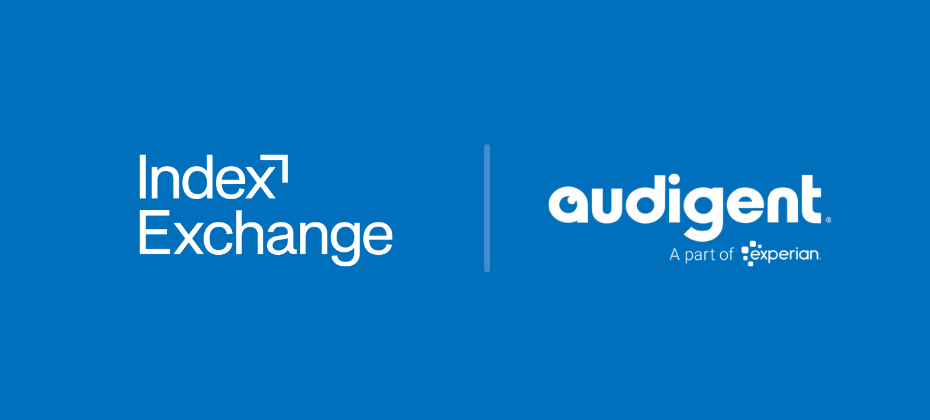At A Glance
As CTV viewership grows, marketers face challenges in targeting and measurement across fragmented platforms. Identity resolution and audience strategies, supported by Experian’s syndicated audiences and privacy-safe solutions, help DSPs and advertisers reach high-value audiences, improve campaign accuracy, and drive measurable outcomes.In our Ask the Expert Series, we interview leaders from our partner organizations who are helping lead their brands to new heights in AdTech. Today’s interview is with George Castrissiades, General Manager of Connected TV at AdRoll.
Premium reach and fragmentation
As viewer attention fragments across platforms, how should marketers redefine “premium reach” in CTV to prioritize engagement and audience quality over scale alone?

A few years ago, ad supported streaming over-indexed on younger adults, those without much financial history and much more budget conscious. It would have been fair for B2B brands to assume that maybe they weren’t going to find their C-Suite audiences on those channels, and so connected TV(CTV) was positioned as a top of funnel tactic aimed at retail. But that’s all changed – ad-free prices are going up, and ad supported tiers are the norm across the majority of channels. 66% of adults have at least one ad supported streaming channel, and adults today spend nearly as much time streaming movies and TV as they spend on their mobile phones. Now that ad viewing audiences on CTV really span the full spectrum of demo, techno, and firmographic segments, savvy marketers should partner with platforms that offer breadth and depth of targeting and measurement to find the highest value audiences wherever they’re watching CTV and serve them highly relevant ads that draw their attention towards the screen. I know I’m jumping out of my seat whenever I see an AdTech or MarTech ad.
Identity and relevance
What does a strong identity framework unlock for delivering household- and person-level relevance across screens, and how does it reshape audience planning?

In privacy-safe ecosystems, people want to share less data and log in to websites and browsers less frequently. If you can’t resolve a household ID to a CTV device through Safari and other sources of obfuscated identity, you’re going to end up losing a lot of signal along the way. On top of that, targeting smaller, higher-value audiences means this attrition can have a profound impact on your ability to build meaningful reach and use audience forecasts to predict scale. A strong identity framework is the key to maintaining as much of your planned audience as possible and staying true to initial forecasts.
AI and outcome planning
How is AI evolving CTV from tactical bidding to strategic outcome planning, and what mechanisms are in place to validate true performance lift?

Tomorrow isn’t guaranteed, especially not in advertising. Audiences change where and when they consume media, and so shifting budget to a placement that did well yesterday is like buying a stock when it’s outperforming – the gains might be gone by then! Predictive AI is bridging the gap to find the highest value and most engaged audiences in real time, versus being purely reactive. This helps drive outcomes which we see in the form of pipeline influence, ROAS, and site traffic lift – without exponentially increasing costs. The same is true for account-based marketing(ABM) outcomes – there’s a blend of signals, account “fit” and intent data that needs to be evaluated in a deeper, more intelligent way. AI is helping to find those highest value accounts, even before they’re in market, which means smart marketers aren’t showing up late to the party.
Measurement and incrementality
What privacy-safe, closed-loop measurement frameworks should become standard to prove incremental visits and sales from CTV campaigns?

Working with a dedicated multichannel, full-funnel ad and marketing platform like AdRoll can easily let you know when a user arrives at your site and makes a purchase, but understanding how that customer arrived there and which tactics deserve the credit requires a deeper, more sophisticated workflow. Our partnership with Experian allows all devices in a household to ladder back up to a household ID, so we can ensure accuracy without pivoting on anything personally identifiable. This works perfectly in CTV, an environment that follows an app workflow of user resettable device IDs rather than IP address or email but always connects seamlessly to web tokens including cookies. Accuracy, scale, and privacy are maintained in a proven way – you see this tech underpinning the infrastructure of streaming across all the biggest players, so marketers can rest easy.
Creative and commerce
How can creative sequencing and shoppable TV experiences convert living-room attention into commerce without compromising user experience or feeling intrusive?

I like to say that CTV trades attention for action. Users lean back and focus on the messaging and visuals of the big screen rather than scrambling for the mouse or tapping to close some intrusive pop-up. This focus means that the messaging is absorbed more quickly, but creatives can wear out their welcome just as fast. Sequential messaging really helps to move the messaging along without subjecting the viewer to longer ads where attention wanes, but also increases brand recall and specific product information because the story evolves with each impression. This is a great tactic to use when you want a viewer to take a specific action later – but shoppable ads can help motivate a user to act now, and new formats can really simplify things. Shoppable can feel out of range for most – the top players in this space own major e-comm storefronts and then tie them back into their own demand-side platforms (DSPs), content, and streaming devices. For the rest of us, dipping our toes in slowly through simple and cheap solutions like QR codes can connect audiences right to a web experience from their TVs, or intermediate solutions like interactive video ads. Users love to play around with fun on-screen experiences, and there’s a whole spectrum of crawl/walk/run options available.
Trust and governance
Which shared guardrails—brand safety, fraud control, and frequency management- are essential to unlocking sustainable, scaled investment in CTV?

I’ve always thought of CTV inventory analogously to high-end watches – if you buy from the source or a well-known, reputable dealer, you’re probably buying the real thing. But that fancy timepiece the guy was selling outside the bar, that you swore looked real? Probably not. Untrusted resellers and too-good-to-be-true pricing might mean you’re running ads on a screen at a lonely gas station at 3 am to an audience of no one, and that’s not even the worst case scenario. Good relationships and deep pockets can solve brand safety and fraud issues, but not every advertiser is going to have those resources. Brand safety and fraud prevention can reduce workload and help distinguish the good stuff from the growing pool of gray area, arguably, CTV inventory that isn’t what was promised to a customer. Outsourcing this trust also goes a long way, with buyers knowing you’re not grading your own homework. Frequency management is equally as important. Once you have your audience and your good supply, it’s important not to abuse a single household just because they meet your targeting criteria. Reach is your best friend with CTV.
Data and audience strategy
How do Experian’s syndicated audiences provide a consistent, scalable foundation for planning, activation, and measurement across CTV and digital, and what outcomes are clients seeing?

We love to talk about how Experian’s data is such an integral part of so much of streaming’s architecture, and the fact that it’s built on deterministic datasets means you’re getting scaled audiences built on knowledge rather than best guesses. That means a lot when working across multiple channels, privacy-safe environments, and households with an ever-growing number of connected devices. Our customers are always delighted at how precise targeting can be, especially in the B2B/B2C space – and knowing the size of those audiences helps them to understand how budget transforms into reach in a more predictable way. It’s confidence-inspiring to point to a new audience and tell your client that these are their future customers. The best part is showing them the outcomes reporting – we consistently see a massive spike in site traffic and engagement on days when a new Experian syndicated audience is launched!
Contact us
FAQs
Identity resolution ensures marketers can connect devices and maintain audience accuracy. Experian’s identity solutions help reduce data loss and improve audience forecasts, making campaigns more effective.
With viewer attention spread across platforms, marketers need tools that offer both broad and detailed targeting. Experian’s syndicated audiences provide reliable, scalable data to help identify and reach high-value audiences across channels.
Techniques like sequential messaging and shoppable ads keep viewers engaged and encourage action. Simple tools like QR codes or interactive video ads can connect audiences to web experiences directly from their TVs.
Strong identity frameworks help DSPs maintain accurate targeting and audience reach, even in privacy-focused environments. By connecting devices to household IDs, solutions like Experian’s Digital Graph ensure DSPs can deliver relevant ads and measure performance effectively across channels.
About our expert

George Castrissiades
General Manager of Connected TV, AdRoll
George leads the CTV go-to-market strategy at NextRoll, driving rapid growth and adoption of the channel for both B2B and B2C customers. With a track record of building and scaling CTV solutions, he is focused on developing a strategic playbook that accelerates success in the evolving digital advertising landscape.
Before joining NextRoll, George spearheaded CTV product innovation at iSpot.tv and held leadership roles in product and operations at YouTube, VICE Media, Crackle, Roku, and Innovid. His expertise spans product development, monetization, and market expansion.

About AdRoll
AdRoll is a connected advertising platform built for growth-minded marketers. With powerful AI, flexible campaign tools, and seamless integrations, AdRoll helps mid-sized businesses turn complexity into clarity and clicks into customers. The AdRoll platform delivers full-funnel performance through multi-channel advertising, audience insights, and cross-channel attribution, supporting marketers across industries including ecommerce, technology, financial services, education, and more. For B2B teams, AdRoll ABM extends these capabilities with account-based precision, multi-touch campaigns, and real-time buyer intelligence. Backed by nearly 20 years of data and award-winning support, AdRoll enables marketing teams to advertise smarter, move faster, and achieve more, all from one place.
Latest posts

Audigent, a part of Experian, is excited to announce that curated audience and contextual inventory packages are now accessible on Google Display and Video 360 (DV360), delivered via Index Marketplaces. These premium deals offer industry-leading targeting solutions, combining high-quality data and inventory to enhance scale, value, and performance across connected TV (CTV), display, and online video (OLV). The integration launches with over 250 ready-to-run deals covering various sectors, including some available for DV360 buyers for the first time, such as automotive, B2B, seasonal retail, sports fandom, travel, and weather, among others. Each deal combines exclusive audience data with premium inventory under a single DV360 deal ID. The supply-side activation lets you scale campaigns without cookies or device IDs, so results stay consistent even as traditional tracking disappears. "We’re excited to expand Audigent’s curated, data-enriched packages in DV360 with Index Exchange. Putting Experian’s audiences and Audigent's premium supply inside a single deal ID accelerates smarter decisions for marketers—letting brands activate, test, and see results right away.”Chris Feo, Chief Business Officer, Experian Why these packages stand out Unique targeting and supply packages Each package fuses exclusive data with handpicked inventory and ships as a single, ready-to-trade deal ID. Deep partner bench Audiences are sourced from first-party publisher data as well as data leaders such as Experian, Affinity Answers, Acxiom, Bombora, Circana, Dun & Bradstreet, Resonate, Sports Innovation Lab, The Weather Company, and more, providing buyers with deterministic purchase, intent, behavioral, and lifestyle signals in one flight. Future-proofed addressability Packages rely on Audigent’s identity framework, contextual intelligence, and supply-side data activation rather than third-party cookies or device IDs, keeping reach intact as identifiers fade. Three reasons these packages drive results Signal-agnostic reach: Cookieless, device-less targeting preserves scale today and tomorrow. Instant activation: Traders simply add the pre-curated deal ID to a DV360 line item and go live in seconds. Built-in quality assurance: Exclusive audience data is paired with hand-vetted inventory, so you start closer to KPIs from day one. Direct-to-source media buying that pays off By packaging curated, data-enriched deals directly atop Index Exchange, via the Index Marketplaces platform, Audigent eliminates extra hops and integrates premium partner data into a single price, with no additional data management platform (DMP) fees. That means higher match rates, simplified audience management, and a cleaner, greener path that concentrates spend on top-tier publishers. Paired with Index Exchange’s omnichannel reach, brands see stronger performance and lower waste, no trade-offs required. "Our goal with Index Marketplaces is to streamline access to premium supply, high-quality data, and measurable outcomes. Hosting Audigent's ready-to-run deals on Index lets DV360 buyers tap addressable inventory curated for scale, sustainability, and speed – no extra steps, just better results."Paul Zovighian, Vice President of Marketplaces, Index Exchange Real-world use cases Audigent’s deep data collaboration bench isn’t window dressing; it’s baked into every package. Deterministic signals from Experian and fellow data leaders come pre-loaded, so you tap high-intent, high-match audiences the instant you activate a deal ID. In-market auto shoppers Reach consumers actively researching specific vehicle types, such as compact cars, SUVs, trucks, or luxury models, using deterministic data from Experian. These segments predict purchase intent within the next 180 days, enabling the delivery of accurate messaging at the moment of consideration. B2B account growth Target decision-maker employees at companies segmented by employee count: 11–50, 51–250, or 251+, using Dun & Bradstreet’s data. Or reach small business professionals and business decision-makers via deals utilizing Bombora’s data assets. Sports fandom Engage verified MLB fans based on purchase behavior, powered by Sports Innovation Lab. Extend reach to contextual sports content, including live sports and sports-related programming across CTV and OLV. Seasonal retail bursts Engage gift-givers and in-market segments for gifts and occasions. Target DIY home improvers and verified affinity audiences for home projects. Reach back-to-school families by targeting parents preparing for the school year with Affinity Answers’ event-based segments. Weather-driven behavior Activate campaigns based on how real-time or forecasted weather conditions (like sunny days, outdoor activity suitability, or severe weather alerts) influence mindsets and decisions, powered by The Weather Company's data. "This collaboration integrates The Weather Company’s industry‑leading weather forecast data into DV360, the world’s largest buying platform, enabling real‑time relevance through curated deals. Experian contributes deep expertise in consumer audiences, The Weather Company delivers unmatched precision in timing and location, and Index Exchange adds efficiency and transparency – together creating a streamlined, turnkey solution for activation." Dave Olesnevich, VP of Data and Ad Product, The Weather Company Ready to activate? Search Audigent in DV360’s Marketplace, select the Audigent package that fits your KPIs, and add the deal ID to your line item. Prefer a custom build? Reach out to us at partnershipsales@experian to curate a package tailored to your campaign goals. The quickest path to performance is just one deal ID away. Contact us now Latest posts

Brands want more from their media investments: better insights, more efficient reach, and clear proof of performance. Whether you’re starting with high-quality first-party data or need help reaching new audiences, Experian offers flexible solutions to drive reach among key audiences and to measure the impact. We’ve built two primary activation and measurement solutions tailored to how brands operate, so you can spend less time managing data and more time driving outcomes. Use case 1: First-party insights to activation and measurement Best for: Brands with first-party data looking to deepen their understanding of existing customers, activate intelligently, and measure what matters – all through a single trusted partner. Solution: Audience Engine + Outcomes Audience Engine Audience Engine is our self-service platform designed to help you onboard first-party data, gain key insights into your customers, build custom audiences using our powerful data assets, and activate them across 200+ platforms — all within a single workflow. Outcomes Experian Outcomes closes the loop by measuring real-world results of your campaigns (such as visits, purchases, and website actions) and tying them back to specific media exposures across digital and TV channels. Together, these tools offer a full-funnel audience and measurement solution, from planning and activation to proving performance. Let’s bring this to life A leading athletic retailer partnered with Experian and Yieldmo to drive in-store foot traffic, targeting shoppers likely to buy from their competitors during key sales windows. Using Experian’s Audience Engine, which includes our proprietary and third-party data marketplace, Yieldmo built a high-performing, self-serve targeting strategy for the retailer. By combining Experian Audiences with Partner Audiences from Alliant, Circana, Webbula, and Sports Innovation Lab, Yieldmo was able to build apparel and footwear audiences from the data marketplace including: In-store shopper segments Athleisure purchasers Competitive purchasers Audience Engine also enabled Yieldmo to tap into Experian’s identity graph, expanding cross-channel reach and maximizing campaign scale and precision. And while not used for this campaign, our Outcomes solution allows advertisers to tie media spend to in-store activity, so retailers can measure true business impact. Benefits Understand your customers more deeply To reveal behavioral, demographic, and lifestyle trends. Reach your first-party audiences at scale Across top activation platforms, using Audience Engine’s onboarding capabilities. Increase your brand awareness By reaching prospective audiences, using Experian Audiences, Partner Audiences, and lookalike audiences. Measure campaign effectiveness With Outcomes, which correlates media exposures (digital and/or TV) with offline and online conversions, visits, or sales. Optimize future media buys By using attribution insights to refine targeting, creative, and channel mix based on what’s actually driving results. Use case 2: Activation and measurement Best for: Brands that already know who they want to reach and are looking to activate high-quality, data-driven audiences across their preferred media platforms and want to clearly understand what’s driving performance. Solution: Audiences + Partner Audiences + Outcomes Audiences Experian Audiences are pre-built audience segments grouped by shared attributes from Experian Marketing Data built for activation on-the-shelf of top programmatic, TV, and social destinations like FreeWheel, Magnite, and Madhive, in addition to Audience Engine. Partner Audiences Experian's Partner Audiences are high-quality audience segments sourced directly from 30+ leading third-party data providers like Affinity, Circana, and Dun & Bradstreet. These segments are curated across verticals like Business, CPG, Health, Retail, and Travel, and are available through on top media destinations, in addition to our data marketplace for easy selection and deployment. Outcomes Experian Outcomes helps close the loop by tying real-world results back to media exposures across digital and TV channels. Together, these products empower marketers to activate smarter and prove success with confidence. Let's bring this to life A leading fashion brand set out to grow their customer base by reaching high-intent shoppers where they spend their time: online. Their goal: drive e-commerce conversions through a programmatic campaign powered by The Trade Desk. To do it, they needed more than just reach, they needed accuracy. That’s where Experian came in. On The Trade Desk, the brand quickly discovered Experian’s prebuilt audience segments, readily available and easy to activate. They selected: Age Range: 25–44 Women’s Fashion Frequent Spenders: Households identified as frequent purchasers of women’s apparel, cosmetics, jewelry, and accessories—based on verified, consumer-reported transactions from the past 24 months. These segments gave the brand confidence that it was putting its message in front of the right consumers, those most likely to engage and buy. To understand whether their campaign was driving results beyond impressions, the brand implemented a site pixel to capture both top-of-funnel visitation and bottom-of-funnel conversions. Using Experian’s Outcomes solution, they were able to close the loop—tying ad exposure directly to e-commerce sales. The Outcomes report showed clear campaign lift, highlighting which channels and audience segments performed best. Armed with these insights, the brand refined their targeting and messaging for future media buys—boosting ROI with each iteration. Benefits Reach your ideal audience at scale By activating Experian Audiences and Partner Audiences off the shelf at digital and TV platforms. Access privacy-conscious, diverse data Curated by 30+trusted data providers in verticals like Business, CPG, Health, Retail, and Travel without needing to manage multiple data contracts. Understand what’s working Through Outcomes reporting, which connects media exposure to offline and online outcomes like conversions, purchases, or visits. Continuously improve performance By using attribution insights to inform audience selection, creative strategy, and media channel mix for future campaigns. Bring this to your brand Experian’s activation and measurement solutions for brands gives you the tools to act with clarity: from onboarding your first-party data to reaching new customers and tying media back to real results. Whether you’re starting with deep customer insights or building campaigns from scratch, here’s how our solution helps: Audience Engine Onboard your first-party data, gain insights into audience composition, build custom audiences using Experian and Partner Audiences, and activate them across 200+ leading platforms — all through a centralized, self-service platform. Audiences and Partner Audiences Reach high-intent prospects using Experian’s syndicated audiences or custom-built segments from partners like Circana, Dun & Bradstreet, and more. Outcomes Understand what worked. See how media exposure correlates with actions like store visits, quote requests, site activity, or purchases. Every element is built to help you scale campaigns, improve addressability, and tie media spend to results that matter—without the overhead of multiple vendors or disjointed systems. Ready to see it in action? Get in touch with our team. Latest posts

1,000+ ready-made segments, available for activation within Nexxen Audigent, a part of Experian, has officially launched its audiences in the Nexxen demand-side platform (DSP), pairing premium publisher audiences with Nexxen’s streamlined connected television (CTV) and omnichannel buying workflow. Audigent transforms real engagement from premium publishers into over 1,000 ready-to-activate segments—spanning beauty, finance, travel, and more. Three key benefits Signal quality Verified publisher data drives higher match rates and wider look-alike reach. Media impact Reach up to 92 million entertainment fans, 78 million retail shoppers, or 71 million finance intenders across CTV, online video (OLV), and display without guesswork. Privacy and compliance Every segment is built from opt-in, first-party data and delivered through Audigent’s privacy-by-design framework. How Audigent and Nexxen boost your campaigns Now live in the Nexxen DSP, Audigent’s premium audiences plug directly into your existing buying workflow—making it easier than ever to plan, activate, and optimize at scale. Audigent utilizes cookieless, first-party IDs sourced directly from its premium publisher network, allowing advertisers to future-proof campaigns and continue to reach real people across browsers, devices, and CTV. Vertical use cases Auto Target auto intenders as they research new models, then retarget them on CTV during primetime motorsports broadcasts. Retail and CPG Engage retail shoppers with dynamic product ads ahead of peak sales weekends, bridging display and CTV for sequential storytelling. Travel and Hospitality Reach travel planners with destination-specific offers the moment they begin searching for flights. Finance Serve relevant credit card or fintech messaging to finance enthusiasts researching personal finance content. Premium audiences, measurable performance As a part of Experian, Audigent’s audience solution complements our broader identity resolution and activation capabilities, ensuring consistency across every channel. Together with Nexxen’s unified tech stack, advertisers can launch ads faster while respecting consumer privacy. Audience data, targeting, and media all sit in one workflow, making results easy to see and optimize. Contact us Latest posts